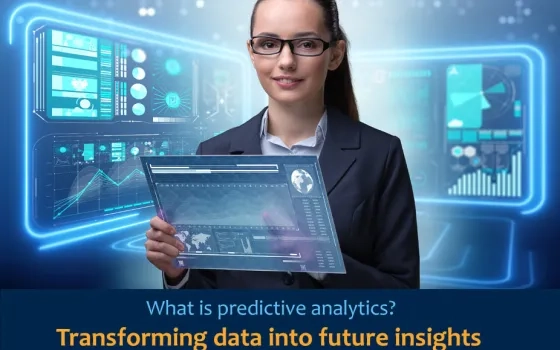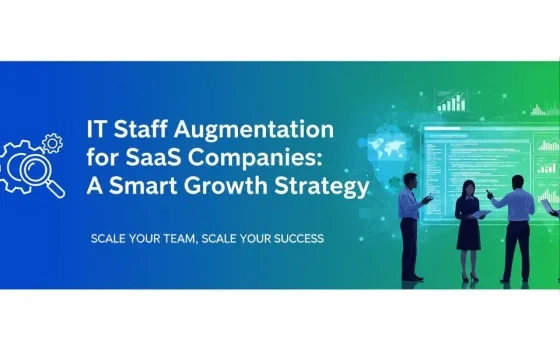Introduction
Predictive Analytics is a division of advanced analytics which is used to forecast uncertain future events. Predictive analytics make use of an array of technologies from different domains such as data mining, statistics, modeling, machine learning, and artificial intelligence to analyze historic data to forecast the future.
It uses a stack of data mining, predictive modeling and analytical methodologies to bring together the management, information technology, and modeling business process to forecast the future. The historical and transactional patterns of data can be used for risk identification and future opportunities. Predictive analytics models detect correlation among many factors to assess risk with a particular set of conditions to give a score or weightage. By successfully applying predictive analytics the businesses can effectively use big data for their benefit.
PREDICTIVE ANALYTICS AT WORK
Predictive analytics engages Knowledge Data Discovery steps and forecasts the maximum likelihood outcome as the prediction. It clubs Data mining and Machine Learning to result in qualitative and quantitative predictions for the future. These are the four necessary steps to be taken for arriving at prediction –
ACCESS AND EXPLORE DATA
The necessary and relevant data is acquired from various data sources such as sensors, databases, data lakes, etc.
PRE-PROCESSING AND AGGREGATING DATA
messy data are removed and then the remaining data are transformed into the required format, along with the selected features extracted.
PREDICTIVE MODELS DEVELOPMENT
Statistical and Computational methodologies are used to build the models and their experiments to optimize parameters used while training and monitoring the performance.
INTEGRATION WITH REAL-TIME SYSTEMS
Predictive and Prescriptive analytics are integrated to standardize the Intelligent system that functionally works on the Predictive Building and responds in the way desired.
The benefits of Predictive Analytics are
- Helps in analyzing overall Business.
- Analyze the End Product.
- Improve customer satisfaction
- Prevents rotation and detects signs of dissatisfaction
- Expand the quality of your customer’s life cycle
- Identify the high potential customer
- Allows campaign planning
- Analyze campaign performance
- Identify the probability of purchase
- Reduced asset maintenance costs
- Improve safety & compliance system
Predictive analytics examples
Let’s take a look at a few significant applications that range from customer retention potentially life-saving measures, like diagnosing illnesses.
RECOMMENDATION SYSTEMS
If a business already has the data on what services does its customers want, they will be better equipped to serve customers. For example, Spotify’s predictive analytics-based recommendation system provides content based on users’ past activity, allowing customers to save time searching for new music.
CALCULATING CREDIT SCORES
An individual’s credit score is calculated on predictive analytics. Algorithm intake factors associated with that individual’s credit history, such as payment history and number of credit cards held, and gives out a result for the likelihood of future debt repayment.
ESTIMATED TIME OF ARRIVAL
GPS systems use real-time sensor data, including speed, weather, and traffic conditions, to estimate or predict the time of arrival at the destination
Predictive analytics tools
Predictive Analytics Software Tools have advanced analytical capabilities like Text Analysis, Real-Time Analysis, Statistical Analysis, Data Mining, Machine Learning modeling and Optimization, and many more to add.
Libraries for Statistical Modeling and Analysis
- Scikit-learn
- Pandas
- Stats model
- NLTK (Natural Language Processing Tool Kit)
- GraphLab
- Neural Designer
Open-Source Analytical Tools
- SAP Business Objects
- IBM SPSS
- Halo Business Intelligence
- Daiku-DSS
- Weka
- R-Studio (R-Programming used)- most demanding Statistical tools for Machine Learning
- Apache Mahout (easy integration with Hadoop)
- RapidMiner Studio
- H2O.ai
- Knime Analytics
- Statistica
- Orange
- Anaconda
Predictive analytics models
CLASSIFICATION MODEL
The classification model is arguably the simplest of the predictive analytics models that we are going to discuss. It categorizes data based on historical data.
This model is best to answer yes or no questions, providing broad analysis that’s helpful taking decisive action.
The bandwidth of possibilities with the classification model—and the ease with which it can be retrained with new data—means it can be applied to many different industries.
CLUSTERING MODEL
The clustering model puts data into different, nested smart groups based on comparable characteristics. In the clustering model, customers with common characteristics are grouped together quickly which makes it easier to devise customized strategies.
FORECAST MODEL
This is one of the widely used models. The forecast model is used in metric value prediction, that is, historic data is used to estimate future numeric values. Scenarios include: A call center can predict how many calls they will receive in an hour. A shoe store can calculate how much inventory they should keep in hand to meet demand during a particular sales period.
OUTLIERS MODEL
The outliers model is used for anomalous data entries within a dataset. It can sense and group anomalous figures either by themselves or in conjunction with other numbers and categories. The outlier model is used in retail and finance. For example, the model can assess not only amount but also the location, time, purchase history and the nature of purchase when identifying fraudulent transactions.
Predictive modeling techniques
Predictive analytics incorporates various data analysis techniques, such as machine learning, data mining, and statistics. As machine learning comprises the core of predictive analytics, we’ll focus on how we can use unique prediction-based approaches within the machine learning field to gather better insight into future trends.
REGRESSION
A regression algorithm is useful when an organization wants to predict a numerical value, such as how much a customer will spend on car payments over a period of time.
For example, the linear regression technique looks for a correlation between two variables. Regression algorithms identify patterns that predict correlation among variables, such as the amount a customer spends in relation to the browsing time in an online store.
NEURAL NETWORKS
Neural networks intake past and current data to forecast future values. They are designed in such a way to identify complex correlations hidden in the data, which is comparable to human brain’s mechanism of pattern detection. Neural Networks are mainly used in image recognition and patient diagnosis.
While decision trees are used in classification problems, they can solve much more complex problems when used in predictive analytics. For example, an airline service provider might want to identify a suitable time to fly to a new destination. It might also want to identify the price point to set for such a flight, as well as the target customer segments. The airline can use a decision tree to gather information on such a scenario.
Predictive analytics algorithms
There are several algorithms that can be applied in Machine learning predictive modeling. Some of them are:
RANDOM FOREST
Random Forest is one of the most popular classification algorithms, which is capable of both classification and regression. It can precisely classify large volumes of data.
The algorithm is a combination of decision trees, hence the name ‘random forest’. Each tree relies on the values of a random vector sampled independently with the same distribution for all trees in the “forest.”
The advantages of the Random Forest algorithms are:
- Accurate and efficient when running on large databases
- Multiple trees reduce the variance and bias of a smaller set or single tree
- Can handle thousands of input variables without variable deletion
- Can estimate what variables are important in classification
- Provides effective methods for estimating missing data
- Maintains accuracy when a large proportion of the data is missing
K-MEANS
K-means involves grouping unlabeled data points in different groups upon similarities. This algorithm is applied in the clustering model. K-means figures out the common attributes of individuals and places them together. This is helpful when you have a large set of data and are looking to implement a customized plan.
PROPHET
The Prophet algorithm is applied in the time series and forecast models. Facebook developed this open-source algorithm for its internal forecast purposes. The Prophet algorithm used in capacity planning, such as resource allocation and setting goals. The inconsistent level of performance and inflexibility of fully automated forecasting algorithms makes it difficult to successfully automate this process. On the other hand, manual forecasting needs hours of work by highly experienced analysts. It is a popular alternative for the time series and forecasting analytics models, thanks to its speed, reliability and robustness when dealing with messy data.
Conclusion
Predictive analytics is all about making educated guesses based on historic data. This means that your forecasts will fit into statistical models and that just because all the data points to a particular outcome, it might not happen in reality.
Also, your models are built with a finite number of variables, whereas an infinite number of variables can influence actual human behavior. No model will precisely predict all behaviors, but the more the amount of data you use the better your models will be at forecast. You need to start by identifying what predictive questions you are looking to answer, and more importantly, what are you looking to do with the answers. Consider the pros of each model, as well as how each of them can be optimized with various predictive analytics algorithms, to decide how to use them to fit your organization.

















